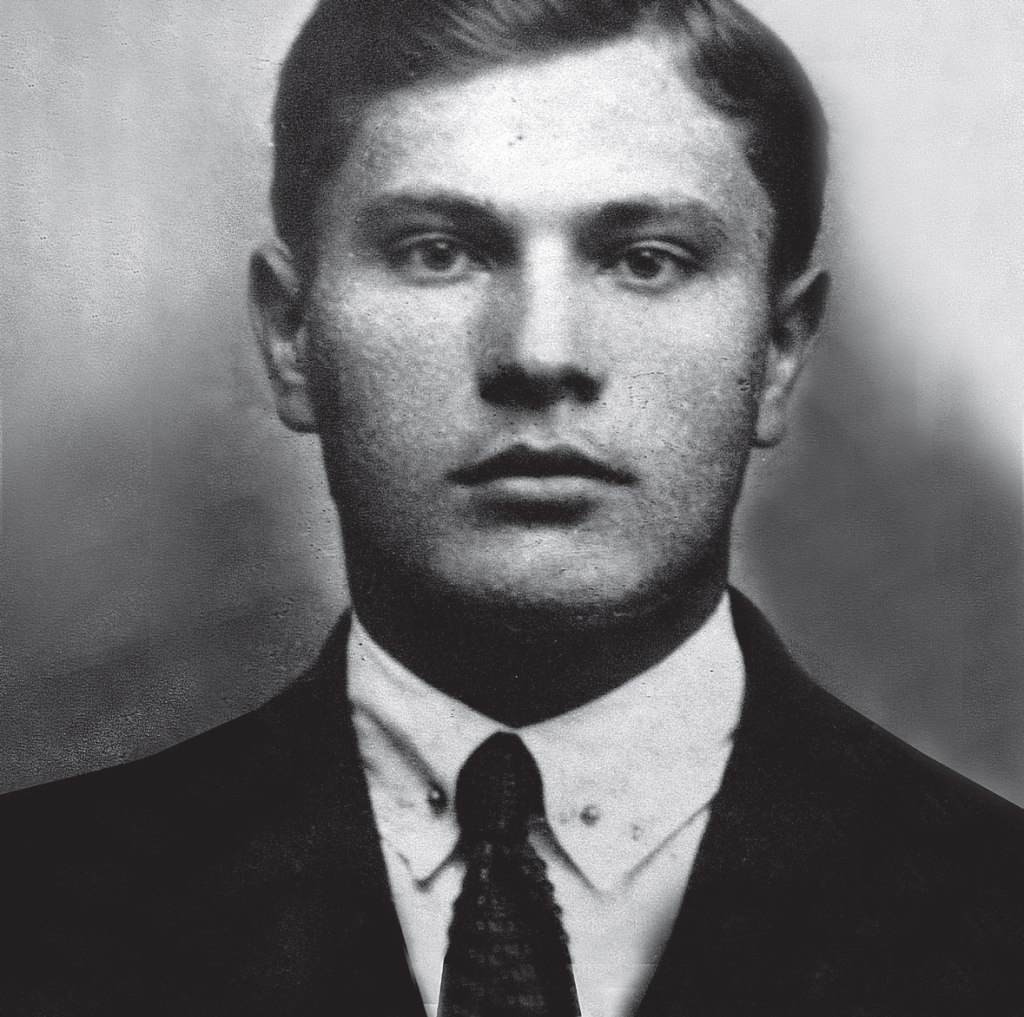Jan Zeh (1817–1897) – forgotten pioneer of the Galician oil industry

Pharmacist in the second generation
Jan Zeh was born in 1817 in Łańcut, died in 1897 in Boryslav. Despite the Hungarian roots (Zeh’s family migrated from the other side of the Carpathian Mountains two generations earlier), the family was already assimilated. His father, Jan Ludwik Zeh, although he was probably only an employee, not the owner of a pharmacy in Łańcut, managed to finance the education of his son. As the son of the pharmacist, Jan had a clearly defined career direction. In 1830 he became a pharmacy student in Sambor, and after gaining the necessary financial means by the father, he was sent to Vienna, where in 1846 he became a Master of Pharmacy.
Breakthrough distillation of kerosene at the Pod Złotą Gwiazdą pharmacy
After graduation, aged just under thirty, as a full specialist in matters concerning pharmacies, he was employed in the Piotr Mikolasch’s Pod Złotą Gwiazdą pharmacy in Lviv. Moving to the capital of Galicia was decisive for John.
As ordered by his boss, he worked on the distillation of crude oil in a modern laboratory. In 1848, a co-worker Ignacy Łukasiewicz, five years his junior, joined him. Just like Zeh, he was looking for a distillation method for crude oil. Their joint work resulted in receiving a clean (odourless and transparent) pharmaceutical distillate called Oleum Petrae album.
If not a medication, then fuel for lamps – the beginning of the oil industry in a Lviv hospital?
Although the price of the kerosene offered by the Pod Złotą Gwiazdą pharmacy was much lower than the price of competitive Italian products, there was not much demand for it. The use of kerosene for lighting purposes was a chance to increase profits. In cooperation with the tinsmith, Adam Bratkowski, they succeeded in igniting the distillate in specially constructed lamps. As it turned out, it was the first huge step towards the revolution in the way of illuminating cities. On March 20, 1853, a store window of the Pod Złotą Gwiazdą pharmacy was illuminated with the first kerosene lamp.
However, the first months after this event did not bring Zeh publicity. Only when the invention of young pioneers of petroleum industry enabled carrying out surgery at the Lviv hospital in Lychakiv at night on July 31, 1853, the first discussions about inventors began and the first orders were placed.
A patent for a crude oil processing
Jan Zeh was perfectly aware of the importance of his discovery. In the same year, he filed a request to the Lviv governorship for granting a privilege (an equivalent of today’s patent) concerning the chemical crude oil processing. He received it at the end of 1853, becoming the sole entrepreneur in Galicia empowered to process oil: “p. 40, item 400. Zeh Jan: the invention of such rectification of natural crude oil in course of chemical processing, so that it can be directly used for technical purposes. December 2, 1853. Validity 2 years “(Malinowski 2003).
A seller of petroleum products
Zeh founded a distillery near Drohobycz and produced there kerosene, lubricants, vehicle liniments, paraffin candles, which he sold in a store in Lviv at Krakowska Street. His products were exported to various cities, including Vienna, where they met up to one hundred percent of the demand for lighting oil!
In 1854, Zeh was awarded a diploma and a medal for excellent oil refinery at the Munich exhibition. He eagerly shared his knowledge, for example in the report Pierwsze objawy przemysłu naftowego w Galicji (The first indications of the oil industry in Galicia) published in the “Czasopismo Towarzystwa Aptekarskiego” (Journal of Pharmacist Association).
Tragedy
However, professional successes did not go hand in hand with happiness in private life. On February 12, 1858, his twenty-one-year-old wife, Dorota nee Obłoczyńska, and his seventeen-year-old sister-in-law, Hermina, died in the fire of the workshop. The creator of their gravestone at the Lyczakiv Cemetery was the famous Lviv sculptor Paweł Eutele. Their epitaph reads:
Chwila jedna, jedno mgnienie
I tylko garść prochu nikłego,
I tylko straszne wspomnienie,
I nic więcej, i tyle wszystkiego.
Tak, tu nic więcej, lecz w wieczności
Śmiercią złączone siostrzyce
Blaskiem pięknej świecą piękności
Jak ofiarne białe gołębice
One moment, one flash
And only a handful of faint dust,
And just a terrible memory,
And nothing more, and so much.
Yes, nothing is left here, but there
Sisters joined by Death
Shining with a beautiful glamour
Like sacrificial white doves
Boryslav
Jan was soon married to the third sister from the family of Obłoczyński, Maria, with whom he had two daughters: Amelia and Stefania. One after another, their husbands were taking over their father-in-law’s pharmacy. However, the tragedy has left an imprint on his life. He withdrew from business in Lviv and went to Boryslav, where in 1876 he opened a pharmacy at Pańska St. (now Shevchenko Street). Out of sentiment, or maybe gratitude, he chose the star as an emblem for his pharmacy. He lived in the oil town until the end of his life, that is, until 1897.
Today, Jan Zeh is a forgotten figure, although he was undoubtedly a pioneer of not only Galician but also the world oil industry. Only the beautiful sculpture in Lviv at Ormiańska Street reminds us today of his existence. Zeh is sitting at the table, on which the lamp stands. A few meters away, Łukasiewicz is leaning out of the window, with his finger pointed at one of the most prominent figures of Galicia.
Inspirations:
- Estreicher Tadeusz, Jan Zeh zapomniany pionier przemysłu naftowego (Jan Zeh the forgotten pioneer of the oil industry), Warszawa 1935
- Historia polskiego przemysłu naftowego (History of the Polish Oil Industry), ed. Ryszard Wolwowicz, Brzozów–Krakow 1994–1995.
- Malinowski Jerzy, 150-lecie Przemysłu Naftowego – nowe spojrzenie na dawne dokumenty (150th anniversary of the Oil Industry – new insight into old documents), Wietrzno 2003.
- Pabis Tadeusz, Jan Zeh. Wynalazca nafty (Jan Zeh. Kerosene inventor), Libusza 2010.
source of the photo: Muzeum Przemysłu Naftowego i Etnografii w Libuszy (The Museum of the Oil Industry and Ethnography in Libusza) (archive of Anna and Tadeusz Pabis)

